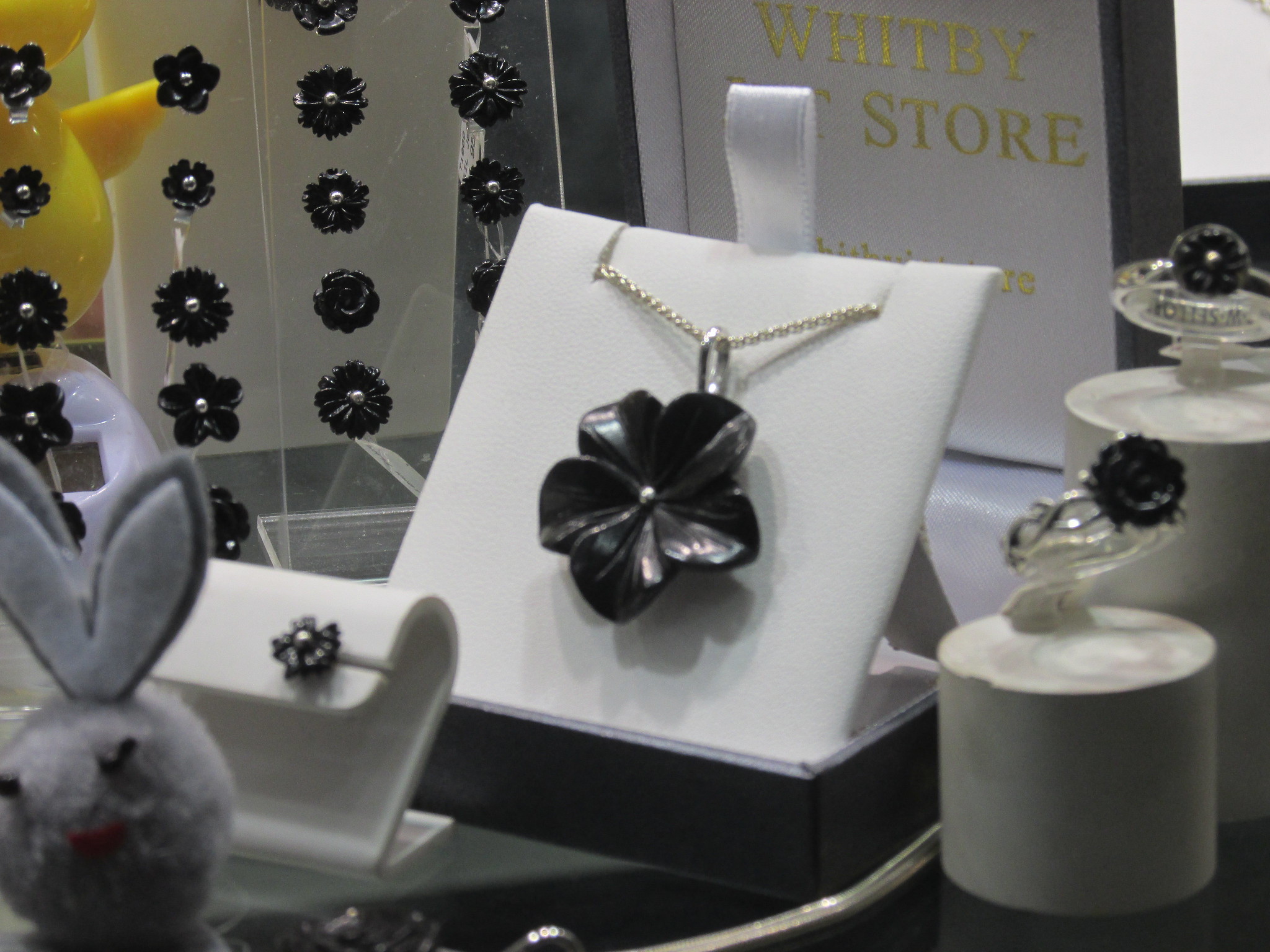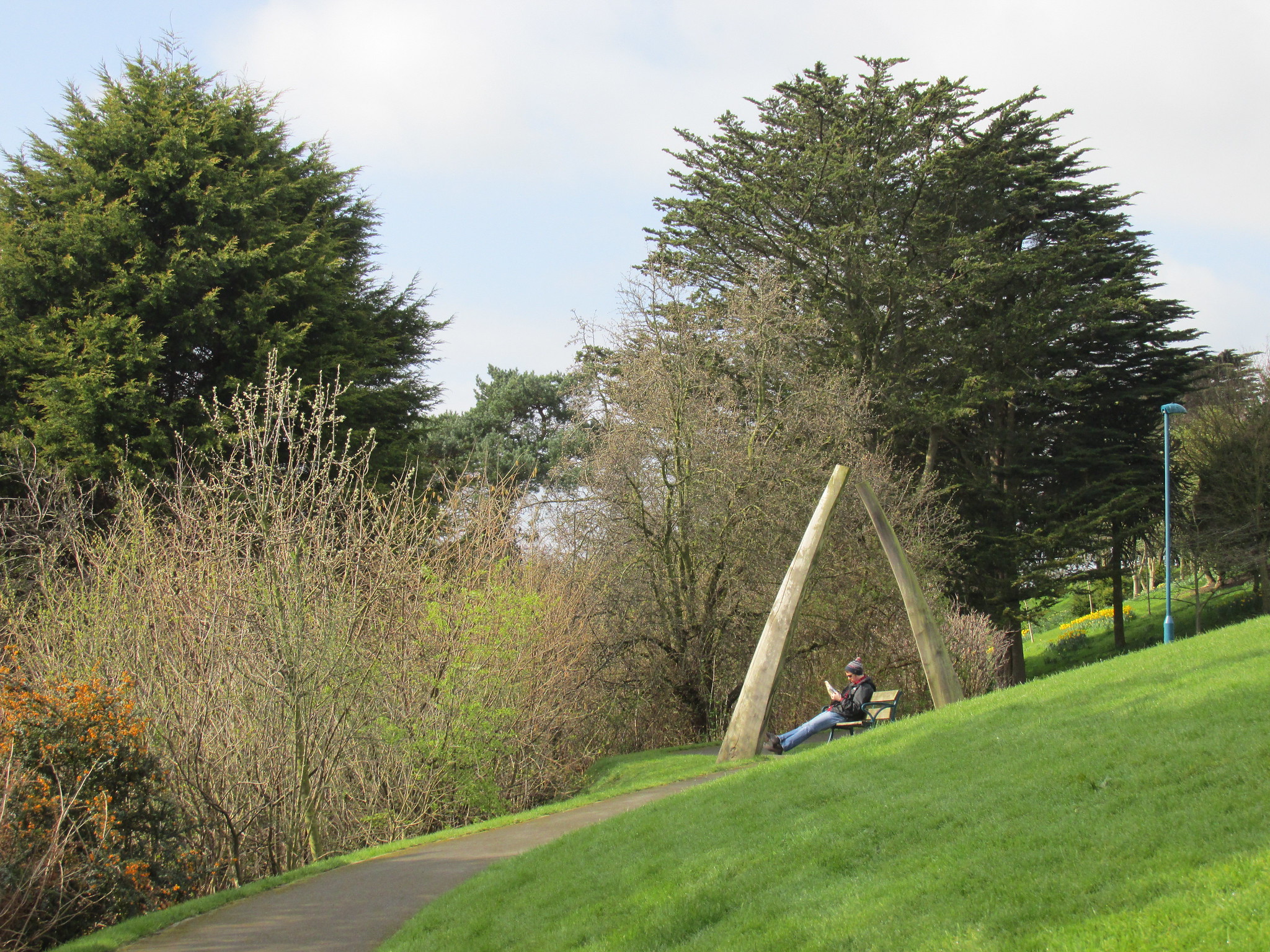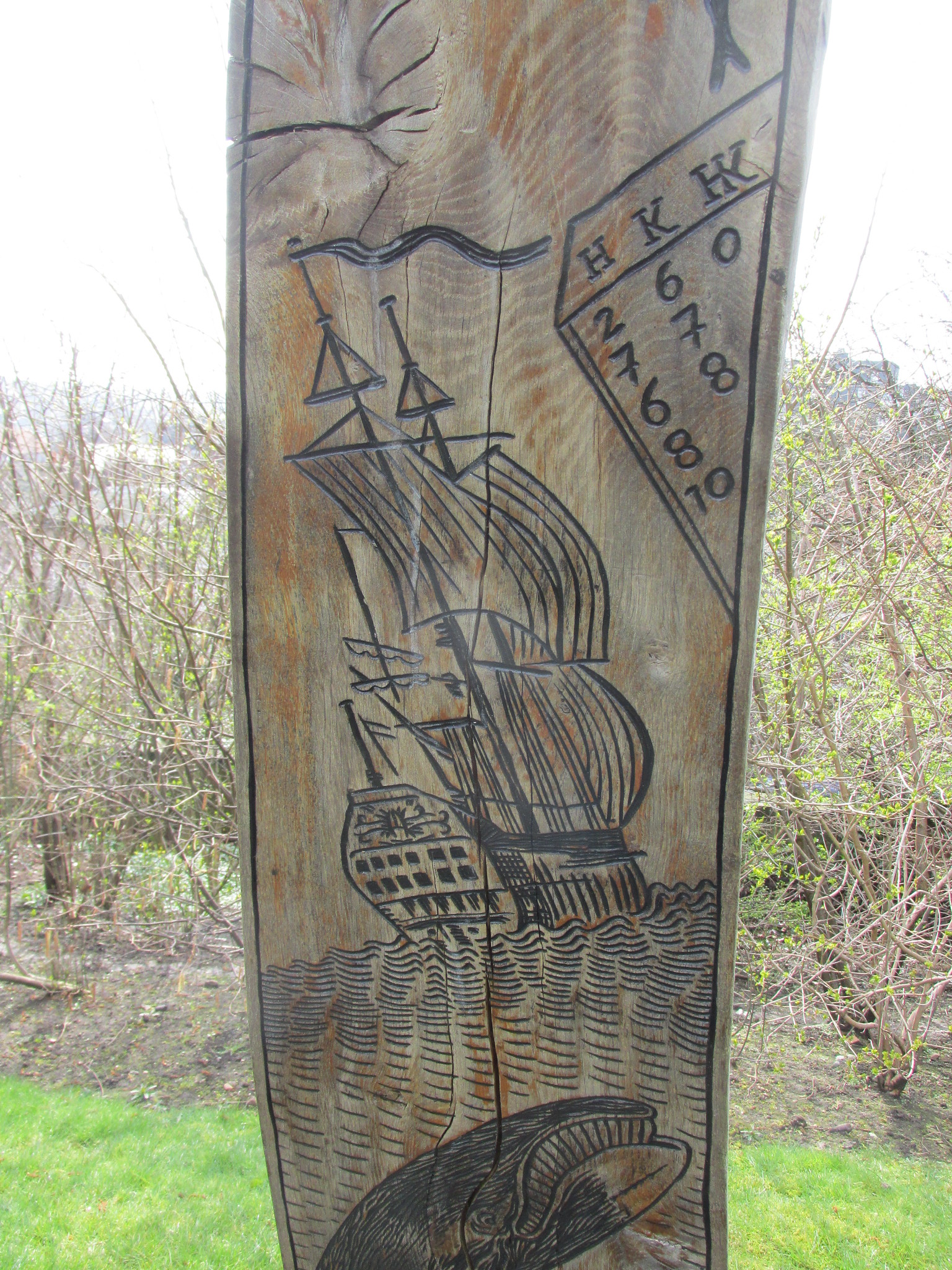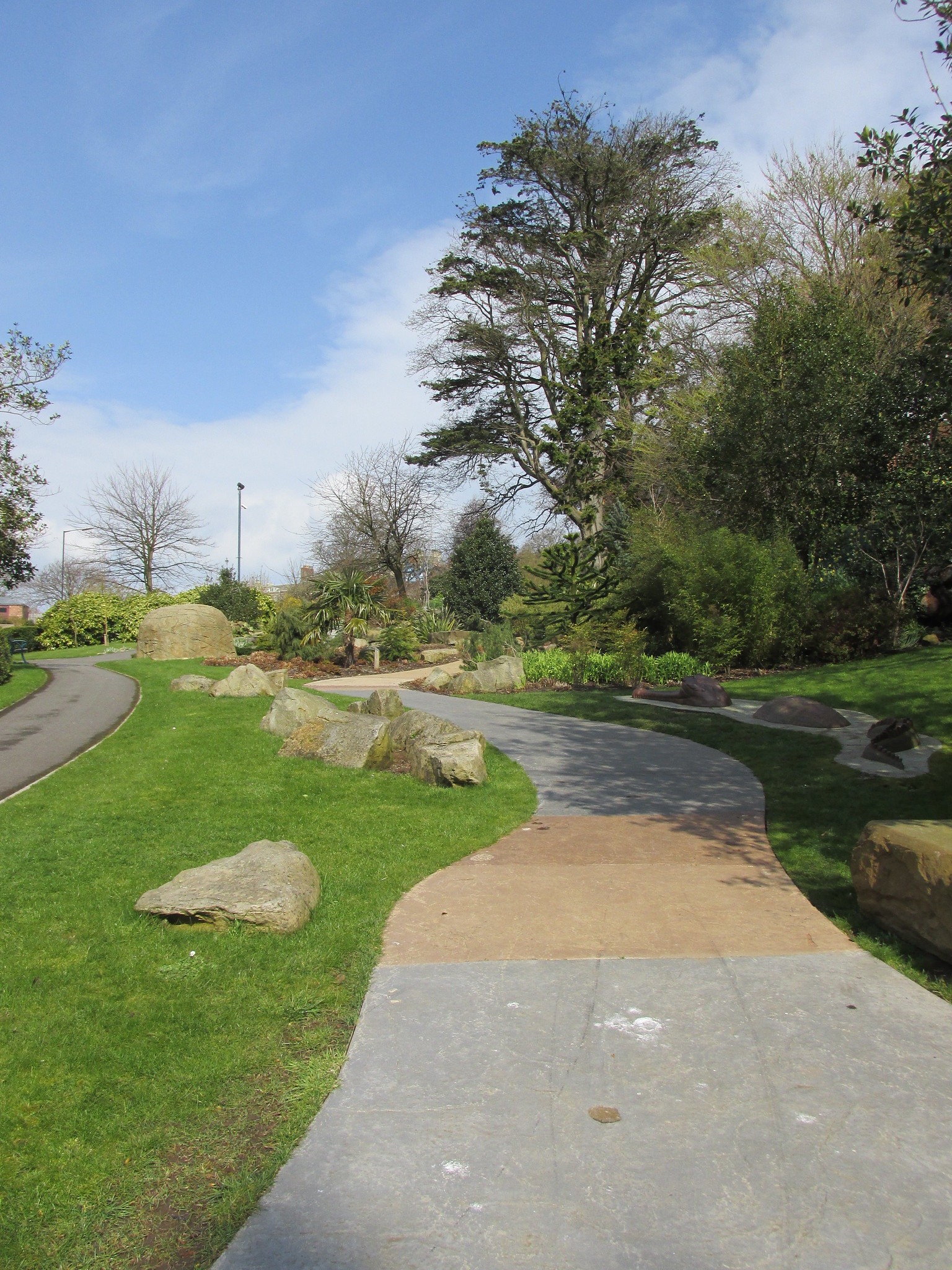 |
| Whitby ghost sign for wholesale jet merchant |
The Yorkshire coast town of Whitby is known for a few things. Wandering around the town you can't miss references to: Dracula (Bram Stoker shipwrecked his eponymous vampire in the town in his novel); kippers (and lots of other fish and shellfish like cod and crab); Goths (they've adopted the town as their own, possibly for its Dracula links); and jet.
If you've never heard of jet you've almost certainly never been to Whitby, because every shop that isn't selling fish and chips is offering examples of the black, semi-precious rock. Its best known source in Britain is Whitby but there were mines all over North Yorkshire where it was extracted. The stone is fossilised wood from a type of monkey puzzle tree and is technically a specialised hard form of lignite.
 |
| Jet jewellery items in a Whitby shop window |
Jet items have been found in a number of prehistoric sites all over Europe. Small carvings occur with Mesolithic finds in Germany and Switzerland and jet beads were discovered in a Neolithic burial in France. The earliest British finds date from the Bronze Age and are mainly beads and small pieces of jewellery. When it occurs on excavation sites it is usually in apparently good condition but it is extremely sensitive to waterlogged conditions and becomes crumbly when it dries out. Archaeological samples are usually consolidated in the same way as wood.
Jet has been used in jewellery for so long because of its lustrous hue, but also because of the belief that it had magical powers. The ancient Greeks and Romans believed that it could protect against snakes; an idea borne out by a necklace found in York during excavations of a Roman site that takes the form of a coiled snake.
 |
| This one's mine and I wear it often |
Although jet items continued to crop up throughout history it was not until the Victorian era that it gained its massive popularity. The Queen was extremely fond of the material and already wore it before she went into permanent mourning for the loss of her husband Albert. She ordered that only jet jewellery could be used at court after Albert died and the country followed suit. Soon jet could be seen all over Britain and the industry took off. Many pieces from the Victorian era are large and ornate and they are frequently combined with other materials such as ivory or cameo to make quite complex items.
It is also possible to find items in a substance called “French Jet” but they are not true jet and easy to tell from the real thing. French jet is actually a form of black glass and is much denser than true jet and feels cold to the touch. More difficult to identify are the various other forms of coal that have been used as jet substitutes. Cannel coal and bog oak are very similar to jet but neither has the deep black colour or the sheen that jet has.
Although the History Anorak has a taste for jet jewellery, has some knowledge of the material and owns a few pieces (see the photo) most of the history on this page has been confirmed by reference to a Shire Publication called Jet Jewellery and Ornaments by Helen Muller. J M Cronyn’s Elements of Archaeological Conservation has also been consulted.








